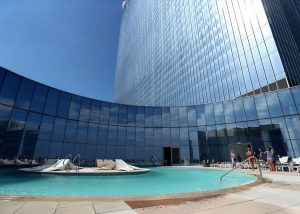Rebuy tournaments are an exciting change from standard freezeout events. In rebuy tournies, once you run out of chips, you can buyin again for a certain period of time. Once the rebuy period is over, there is usually a one-time add-on available, allowing you to increase your stack once some of the field has been eliminated. If you’re interested in trying out these fun tournaments, be sure to bear in mind the following considerations.
Plan for Rebuys
If you’re planning to enter a rebuy tournament with the intention of not making any rebuys, then you are leaving money on the table. Everyone who busts out of the tournament while the rebuy period is still active has essentially provided an overlay to everyone who remains in the tournament. You ought to be one of the people benefiting from this overlay, not one of the people providing it. Moreover, rebuys are usually not raked, so you can essentially reduce the percentage of your buyin that you’re paying in rake by rebuying liberally.
You can usually rebuy whenever your stack is equal to or less than your starting stack. You don’t have to wait until you’re out of chips. You should rebuy as soon as you possibly can, including at the beginning of the tournament. If you should happen to make a monster hand, you want to have as many chips as possible so that you can maximize your gain against a deep-stacked opponent.
Almost Always Take the Add-on
It’s virtually always correct to purchase the add-on at the end of the rebuy period. Again, there will be a lot of dead money in the pot from everyone who has already left the tournament, and you should maximize your chances of winning this money by taking this easy opportunity to increase your stack.
While the mathematics of the situation is somewhat complicated, what you need to know is that it’s correct to take an add-on the vast majority of the time. The only possible spot where you might forgo the add-on is in a situation where you have a huge stack such that the add-on represents only a miniscule increase in chips. Even in this case, taking the add-on is not really a huge error, so for simplicity, it’s better if you just add-on whenever you get the chance. In cases where the add-on is for more chips than the starting stack, it’s even more beneficial to take advantage of it.
Bankroll Management
Due to the fact that you’ll be purchasing a lot of rebuys and add-ons, you have to realize that a given stake plays higher, in bankroll management terms, than the buyin and entry fee would tend to indicate. For example, a $1 + $.10 rebuy tournament will really be more equivalent to a $5.10 tournament when you consider the average amount you will have to spend if you’re serious about winning.
If you’re planning on playing many rebuy tournaments or if you’re considering making them your main game, it’s important that you use correct bankroll management techniques. Some players achieve this by setting a hard limit on the number of times they will rebuy. For example, some players budget only three buyins for rebuy tournaments – the buyin, one rebuy and one add-on. This is probably an error, because they are thereby preventing themselves from continuing in the tournament if they bust out.
A better way to get an idea of the bankroll requirements needed is by calculating the average amount spent in the tournament and using this figure for your bankroll management purposes. If you’re playing $3.30 rebuy tournies and use an average of five buyins per tournament, then it’s essentially the same as a $15.30 freezeout. If you’re using a 50-buyin rule for bankroll management, then you will want to have $765 in order to play these tournaments comfortably.
Be aware that your variance will increase substantially when playing rebuy tournaments. Not only will you have variance in your tournament results, you will also have variance in the number of rebuys and add-ons you buy. Thus, it may be wise to use more conservative bankroll management than you would for freezeout tournaments. If you’re currently using a 50-buyin rule for freezeouts, then you should perhaps use a 75-buyin rule for rebuys, remembering that “one buyin” will be the average amount you spend in the tournament, not the buyin and entry fee listed in the tournament lobby.
Loosen Up a Bit – But Not Too Much
One of the most important considerations in tournament poker – the fact that you bust out if you lose all your chips – doesn’t apply during the rebuy period of the tournament. This means that your opponents will be playing looser than normal, and they are correct to do so. However, some players take this to an unprofitable extreme, getting all-in with hands that have little chance of being good.
Your best bet is to play looser than you normally would, both in terms of calling bets and making thin value bets. At the same time, you should play tighter than the loosest maniacs are playing. This will allow you to get into many pots but still have a stronger range than your loosest opponents. It’s especially worthwhile to try to see a lot of flops in late position if you can get into the pot cheaply. Many players will be willing to stack off postflop with as little as one pair, so you can try to hit sets, flushes and straights to stack them.
Because players will be so willing to get all their chips in the middle, the value of bluffs is reduced. Against normal players, you will want to limit your bluffs to mostly continuation bets when you have raised preflop but missed the flop entirely. Making sophisticated three-barrel bluffs against an opponent who will call to the end with one pair is a losing proposition. Of course, this is very opponent dependent, so if you have a strong read, by all means, make use of it.
After the rebuy period is over, play should revert to a normal, tighter style. You’ll want to use normal tournament principles to decide when to call someone’s all-in bet or when to go all-in yourself. Some of your opponents will not adjust, however, so you should pay close attention to decide who has adjusted and who has not.
The Late Reg + Add-on Strategy
In many cases, the late registration period in rebuy tournaments is identical to the rebuy period. This means that it’s possible to wait until registration is about to close, register for the tournament, rebuy immediately and add-on immediately. For some players, this is their preferred way to play rebuy tournaments.
By using this technique, you’ll be able to use only three buyins (your entry, one rebuy and one addon), simplifying your bankroll management issues. The entire tournament will take less time for you to complete, increasing your hourly rate. On the other hand, you’ll miss out on all the crazy and unskilled play at the beginning of the tournament, which could have a deleterious effect on your return on investment (ROI).
Ultimately, the question of whether or not you wish to try this strategy or play from the beginning of the MTT is a matter of personal preference. It depends upon how much time you have available to play and how you value your time.
One group of rebuy tournaments that seem tailored for this strategy is those in which the add-on amount is many times the starting stack. In such cases, the beginning stages of these tournaments become almost inconsequential since the chips in play at the start of the tournament are but a fraction of those that will be in action after the add-on.
As you can see, rebuy tournament strategy is almost the same as normal freezeout strategy. As long as you’re willing to make the few necessary gameplay changes and adjust your bankroll requirements accordingly, you’ll be able to successfully partake in these action-packed events. Good luck at the tables!







